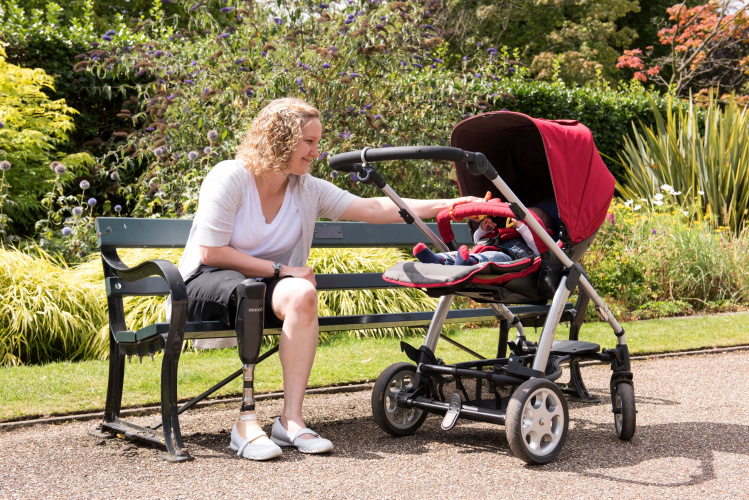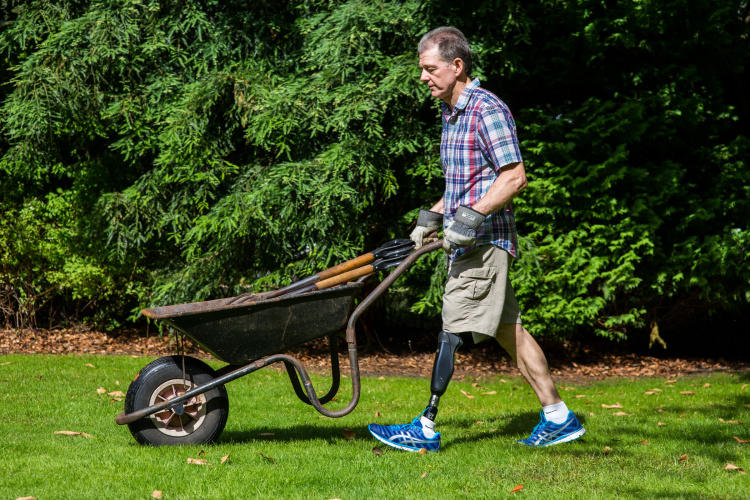 David Moser argues that the best engineering philosophy for rehabilitation devices is biomimetics. Part of that philosophy is understanding the complexity of nature, so that increased personalisation and integration will shape the future of prosthetics.
David Moser argues that the best engineering philosophy for rehabilitation devices is biomimetics. Part of that philosophy is understanding the complexity of nature, so that increased personalisation and integration will shape the future of prosthetics.

Because of the demanding environment inherent to the sector, as well as the opportunities those challenges provide, prosthetic manufacturing has long been at the forefront of engineering innovation. Lightweight yet strong composite materials and advances in manufacturing methods like 3D printing and wearable robotics have found some of their earliest applications in prosthetic devices.
________________________________________________________________
Further reading
- Process rapidly develops bespoke liners for prosthetics
- Nadine Stech on designing the world’s most advanced prosthetic leg
- Future prosthetic: towards the bionic human
________________________________________________________________
Still, 20% of prosthetic limbs are rejected by patients due to discomfort or lack of control. For the remaining 80%, 61% of those who use their prosthesis daily will experience debilitating back pain within two years, and many will require joint replacement surgery in later years. A significant cause is patients being unable to sense, feel and control their new leg in a natural way.
We can, and will, do better. It is because of these challenges that cultivating an effective and broad innovation environment becomes so important. The pace of change is accelerating, judging from the timeliness of technologies, and ensuring new ideas developed in labs have a place to go is important for success.
Mimicking nature
It is important to keep challenging the status quo and discuss past and new ideas around what may be possible in the short-term future. Recent research at ETH Zurich, for example, applied the advances in developing a sense of touch for hand prostheses into lower limb prostheses, with encouraging results – improved sensory feedback in the leg was shown to make walking easier, improving gait and reducing phantom pain. This technology used a sensing foot encoding the sensor data in a form to provide “sensation” feedback. The next step is direct integration with the nervous system which is already being explored by various labs.
This research is one example of a broader conclusion in the field of medical device development; we need not reinvent the wheel. When it comes to the seamless integration of technology and humans, the right engineering philosophy is biomimetics, to mimic nature as closely as possible. Usually there is good reason for the engineering design seen in nature.

Looking to nature isn’t a new idea. The shape of birds’ wings has inspired aircraft and the shape of a bird’s beak has influenced the front shape of Bullet trains. The design of power tools has been inspired by the action of the woodpecker. This philosophy has already demonstrated its worth in our field as our focus is on replacing nature directly, with the microprocessors in artificial limbs like the LINX that adopts sensor and control communication between the ankle and the knee like a nervous system. By integrating and combining sensory information, a richer dataset is produced enabling new advances in limb control and performance.
Personalisation: an opportunity
One of the biggest challenges prosthetics manufacturers still face, though, is that human gait is unique to the individual and a very complex multi-directional movement. From length of stride, changes in speed and continuous and subtle changes in movement to continuously minimize energy expenditure, everyone walks slightly differently. These small deviations can be the difference between comfort and discomfort and therefore necessitate bespoke individualised design and manufacturing solutions.
A current parallel development in healthcare is increasing personalisation: medicines can be tailored to an individual’s genome, and care plans are now more frequently tailored to a patient’s lifestyle. Alongside better data collection and processing, this change in approach provides an opportunity for prosthetics manufacturers to take personalisation even further in the future. Using wearable health monitors like Fitbit, which also has web connectivity, allows comprehensive individualised datasets to be gathered that describe how each patient uses their prosthetic, including health and mobility measures like activity level and range of motion. These devices empower greater patients’ user self-care and the possibility of remote and personalised care opportunities. This enables improved decision making based on real world outcomes. Over time the power of AI will assist and automate much of the personalisation currently needed to setup and adjust a leg to achieve maximum comfort and mobility.
Future prosthetics
These shifts will also have immediate economic impacts. For the patient, increased comfort and safety with come from improvements in sensing and control. The improved biomechanics will reduce problems like back pain and limit joint wear and tear, reducing the need for joint replacement surgeries. Improved rehabilitation times and reduced rejection rates of prosthetics will lower hospital readmission rates, with subsequent economic benefits for health services like the NHS as a whole.
Those without lower limb prosthetic devices walk around continuously changing direction and speed over many different kinds of walking surfaces and terrains, largely without thinking. We don’t really notice how we manage to do it safely and stay balanced, or for the most part consider what our legs are doing. For prosthetic limb users this is not the case. The future goal must be to understand how the engineering of nature achieves this and applying these insights so that one day patients may be less aware, or even forget, that they are using a prosthetic limb.
David Moser is director of research and technology at Blatchford. Over the last 10 years he has led the development of several break though innovations, including the commercialisation of a completely new type of ankle-foot prosthesis, the development of the first microprocessor controlled hydraulic prosthetic foot, and the world’s first integrated limb prosthesis which was winner of the 2016 RAEng MacRobert award and the Medical Design Excellence awards in 2017. His work has helped transform the industry in the last decade and transformed the lives of many thousands of lower limb amputees. In 2016 He was awarded the prestigious ISPO UK NMS George Murdoch Medal for “outstanding contribution to amputee rehabilitation.”




Project to investigate hybrid approach to titanium manufacturing
What is this a hybrid of? Superplastic forming tends to be performed slowly as otherwise the behaviour is the hot creep that typifies hot...